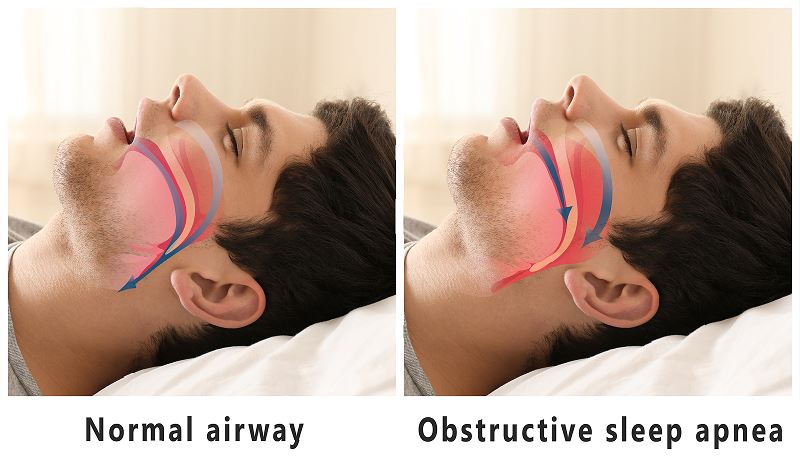Perhaps you heard about it on the news, from a work friend, or read about it online. Regardless of where you first heard the term, you have this one question you keep wondering about:
What is Obstructive Sleep Apnea and how do I know if I have it?

Sleep apnea is a sleep disorder where you temporarily stop breathing while you sleep. Eventually, you begin breathing again, but these patterns where you temporarily stop breathing night after night can cause a number of long-term health problems as well as decrease your productivity during the day.
Obstructive sleep apnea (OSA) is the most common type of sleep apnea. Currently, over 20 million Americans have been diagnosed with OSA.
What Causes Obstructive Sleep Apnea?
OSA causes the muscles in your throat to periodically relax while you are sleeping, blocking your airway and restricting airflow. This restriction of your airways can lead to a lower level of oxygen in your blood and cause a buildup of carbon dioxide.

Due to the restricted airflow, your body will awaken you throughout the night so your airways can reopen. However, these wake-ups are usually so brief that you may not remember having woken up at all. In fact, some OSA patients wake up around 15 times an hour but are completely unaware of it.
This repeated awakening throughout the night will limit your ability to have restful phases of sleep and make you more sleepy during the day.
What are Possible Signs of Obstructive Sleep Apnea?
A few of the most common signs that you may have OSA are:
- Chronic fatigue and tiredness throughout the day
- You snore loudly throughout the night
- You wake up with a dry mouth or a sore throat
- You have experienced sudden awakenings which may have been accompanied by gasping or choking

There are a variety of risk factors which can increase your chances of developing Obstructive Sleep Apnea. Some of the more common factors are:
- Excess weight gain
- Large neck diameter
- Large tongue size
- High blood pressure
- Smoking
- Diabetes
- Asthma
- A family history of OSA
When Should I See a Doctor?
After hearing about the effects and symptoms of OSA, you are probably wondering when it is necessary to see a doctor about this issue. If you aren’t sure, here are a few things you should consider:
- Have you experienced loud snoring that disturbs your sleep or those around you?
- Have you ever woken up gasping for air?
- Do you ever have intermittent pauses in breathing while sleeping?
- Do you experience excessive drowsiness during the day?
If you answered “yes” to any of these questions or are concerned that you are showing symptoms of OSA, you should contact your doctor to learn more about getting tested for sleep apnea. During a sleep study, your brain waves, bodily movements, oxygen levels, and breathing patterns are monitored.
The testing process may seem daunting, but don’t worry, a traditional lab test may not be your only option. OSA is often diagnosed with a home sleep test. Both a home sleep test and Easy Breathe’s Easy Sleep Test can be conducted in the comfort of your own home, and without a sleep technician. Once you have been given a prescription for the test by your doctor, or used one of the Easy Breathe doctors to determine if the test is needed, the equipment will simply be shipped to your doorstep!
Even if you have not displayed these signs, but have experienced other symptoms of OSA, you should consider talking to your doctor about the possibility of CPAP therapy to treat your condition.












